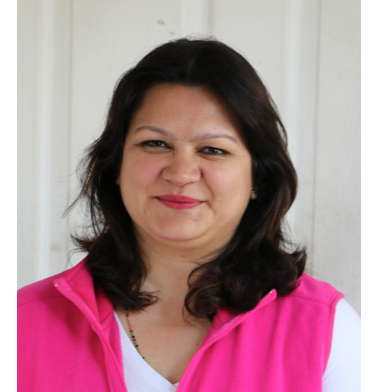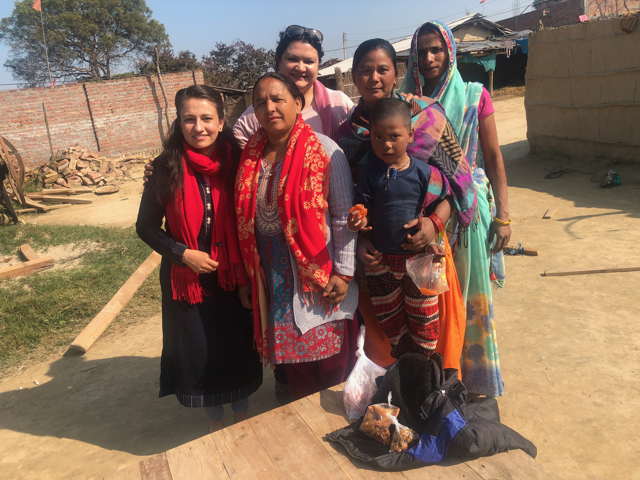 When Dr Chandani Kharel was working as a clinician in Nepal, she witnessed many patients dying from infectious diseases such as tuberculosis and diarrhoea as well as from malnutrition. This was often because they couldn’t afford health care and only sought help when it was too late.
When Dr Chandani Kharel was working as a clinician in Nepal, she witnessed many patients dying from infectious diseases such as tuberculosis and diarrhoea as well as from malnutrition. This was often because they couldn’t afford health care and only sought help when it was too late.
“For me, that was a very striking thing. Why is health care not accessible for everyone? Why does it have to be that you die because you’re poor? We are always talking about universal health coverage, but in reality, that’s not happening on the ground,” Dr Kharel said.
That prompted her to pivot into a career in public health to influence health policy. She obtained a Master of Science degree in Public Health with a focus on health systems management and policy from the Institute of Tropical Medicine in Belgium in 2016.
“As a clinician, I was helping only a limited number of people who came to seek health care. I saw public health as an opportunity to reach out to a wider population, including policy-makers,” she said.
Within public health, Dr Kharel has been focusing on gender-related aspects of health issues. This partly stems from her experience as an expert in sexually transmitted infections when she was approached by teenage girls seeking advice on a wide range of sexual and reproductive health issues. There, she saw that many young women lacked access to health information in a largely patriarchal society. Seeing this first-hand has led her to advocate for gender equity and equality in health.
As part of this work, Dr Kharel has been a member of the Research in Gender and Ethics (RinGs) consortium, which brings together experts and academics from around the world to conduct health systems research and policy analysis in low- and middle-income countries.
Piloting TDR’s intersectional gender research toolkit
Over the past two years, Dr Kharel has been collaborating with TDR on bringing an intersectional gender lens to infectious disease research. TDR recently launched a research strategy on this as well as a toolkit that supports researchers to incorporate intersectional gender analysis in their health research. This encourages research that explores how and why sex and gender intersect with other drivers of inequalities that influence health outcomes.
Dr Kharel (center) with the research team and community members in Bardiya district, Nepal
Dr Kharel has been piloting the toolkit with research teams in Nepal that are generating evidence on how gender intersects with age and ethnicity in the treatment of TB patients in Kathmandu enrolled in the National TB Control Programme. One of the key research findings was that males, predominantly from disadvantaged castes, have poorer treatment outcomes.
They are also studying how gender intersects with other social stratifiers to influence perception, understanding and awareness of lymphatic filariasis (LF) among people in Bardiya District. Here they have found that the majority of study participants perceived that the ethnicity of an individual, influences his or her access to health information, which also shapes their vulnerability to LF.
The full research findings will soon be submitted to a peer-reviewed journal. Policymakers at federal, provincial and municipal levels have been engaged since the development of the project proposals. Further dissemination efforts involve the engagement of female community health volunteers and community members broadly.
The challenge of mainstreaming intersectional approaches to health in Nepal
Mainstreaming the inclusion of gender and intersectionality across health programmes is an ongoing effort, Dr Kharel says. Nepal has already formed a Gender Equality and Social Inclusion (GESI) strategy which has been included in health programmes since 2009. The initial focus on gender and caste has been expanded to address people with disabilities, the elderly and the poor.
The COVID-19 pandemic has also highlighted this issue as targeting vulnerable populations such as the elderly and those with underlying health conditions has been a key part of the vaccine roll-out. However, the concept of intersectionality is still novel in Nepal.
“You have to keep reinforcing that it’s not just about social equality and that you have to look at things from an intersectional point of view,” Dr Kharel said.
Moreover, Nepal is socially and culturally very diverse with 125 ethnic groups and as many languages, which makes it difficult to apply the approach at a national level, catering to all these groups, especially without a digitized national identification system. It may be more practical to start at the provincial level.
“It’s an iterative process,” she said. “We would obviously like to see intersectionality integrated across all health programmes.”
For more information, please contact Dr Mariam Otmani del Barrio


